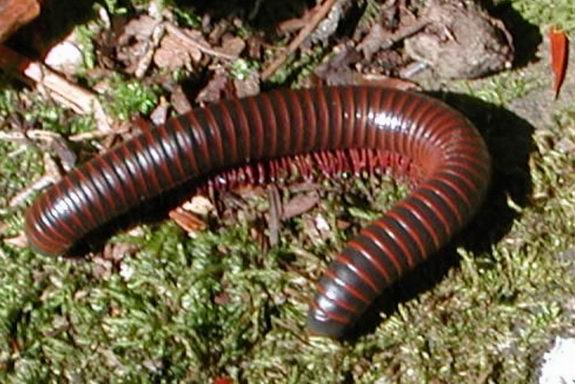|
Common Name: Millipede (One thousand legs) Scientific
Name: Narceus
annularis Order
Spirobolida Class Diploda Millipedes are slender, hard-shelled, worm-like arthropods with elongated rounded body segments. The one most commonly seen on the mountain trails and woods is the black and red Narceus annularis, one of about 1,000 North American species. Potpourri: Millipedes have between 60 and 400 legs (depending on the species), with two pairs of legs on each body segment (the taxonomy of the Class Diploda is due to this arrangement). When millipedes hatch from eggs, they have only 3 pairs of legs, adding the additional legs as they molt seven to ten times over the course of their lives. As adults, the 1st and 4th segments have no legs and the 2nd and 3rd only have one pair. The number of legs is then 4 times the number of segments minus 10. Millipedes are important indicators of trends in land-water relationships, such as acid rain, as they affect the biosphere. This is because they have a limited ability to migrate, depend on stable conditions of moisture and shelter (they feed on decaying vegetation and leaf litter), and since they have evolved very little since they first appeared about 380 million years ago in the Devonian Period. Millipedes, like many hard-shelled arthropods, give off a repugnatorial (distasteful to predators) fluids. The secretions are produced in glands that are in each segment along the sides of the body with the exception of the head and the sections immediately behind. The secretion of the Narceus annularis is a benzoquinone that is a foul-smelling compound that repels potential predators such as birds, toads and rodents. |
